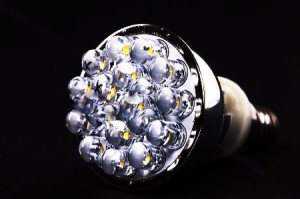Research
We are constantly researching the marketplace with the aim of knowing what is going to happen, before it actually does. Our constant vigilance about research ensures that we know that our recommendation is not only the right decision now, but will be in years to come. If a new technology is about to come through making an existing product obsolete, we are in a perfect position to know and advise appropriately.
Light Emitting Diodes (LED’s)
Fluorescent tube technology improvements
Mercury (sometimes known as quicksilver)
Magnetic Induction Lighting
Hybrid Compact Fluorescent (CFL)
Cold Cathode Fluorescent Lamp
Light Emitting Diodes (LED’s)
There are constant improvements in the LED market and too many different styles to post about all of them. LED’s in general, are very small and the lights are actually an arrangement of many individual LED’s.

They are also extremely efficient at producing light, and only emit light in the desired direction (unlike fluorescent tubes and incandescent light bulbs which always illuminate everywhere).
Fluorescent tube technology improvements
Although fluorescent tubes have been around for many years, manufacturers are still finding ways to improve them. The control circuitry is more efficient, and the tubes themselves are still improving. Fluorescent tubes, despite these improvements, all work using the same fundamental principles in that they require mercury to create light. Although modern manufacturing techniques have greatly reduced the mercury content required, it is still a notable health concern should the mercury escape for any reason.
Mercury (sometimes known as quicksilver)
There have been many studies done on the affects of Mercury to humans and other living organisms. As a general guideline, we recommend that all direct contact with mercury be avoided. If you wish to know more about Mercury; we recommend that you search the internet and read some of the studies that have been published.
To help get you started we have provided a couple links; please read our disclaimer regarding the use of these links.
Toxicity and safety
Public health England – cleaning up Mercury spills
Magnetic Induction Lighting
In concept, these are a fluorescent tube without any wires penetrating the tube; instead a magnetic field is used to ‘excite’ the mercury vapour and produce light. Several years ago, this type of lighting was still in the design stages with primary problems including electro-magnetic interference, high production costs, and creating internationally recognized standards. Presently this type of lighting is starting to appear sporadically in the marketplace. These lights do have potential, but the competition from other lighting types is strong.
Hybrid Compact Fluorescent (CFL)
In 2010, hybrid lights were created combining a standard CFL and a halogen light to give the low energy use of a normal CFL, with the instant-on benefits of halogen lighting. This type of lighting is now starting to come into the domestic marketplace and has strong potential. There is tough competition in the domestic market to replace the standard CFL, such as the nanolight.
Cold Cathode Fluorescent Lamp
Originally this type of lighting was used in document scanners and backlighting LCD screens. This type of lighting is unlikely to be used for normal room lighting due to its energy inefficiency when compared other alternatives.
We take pride in our industry knowledge and work hard to stay at the forefront of lighting technology. Please get in contact; we are keen to learn what you have to share.

